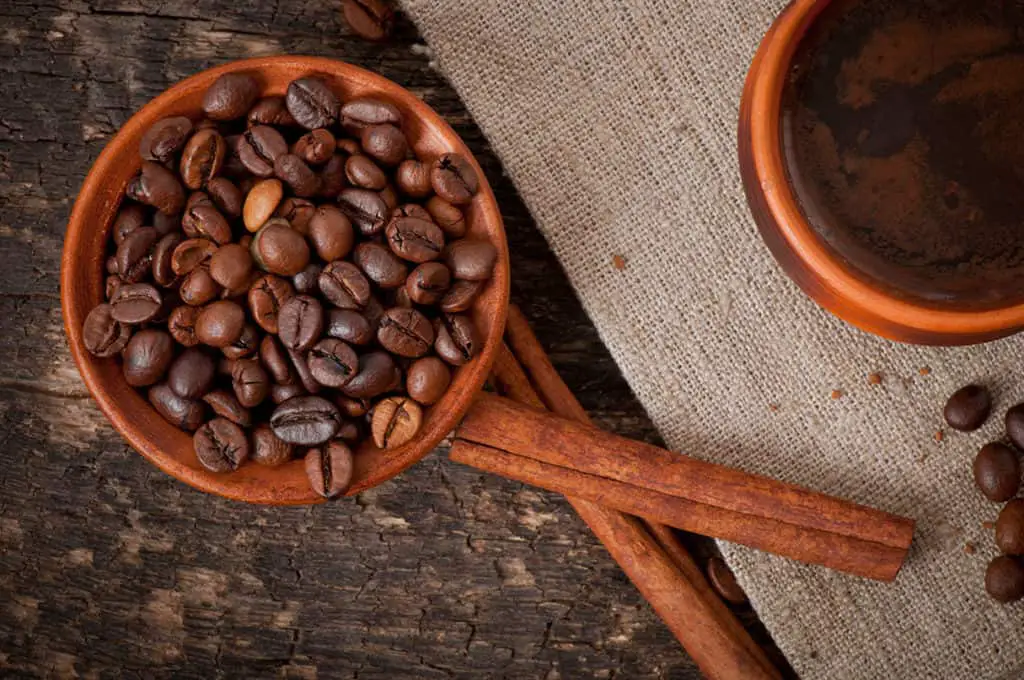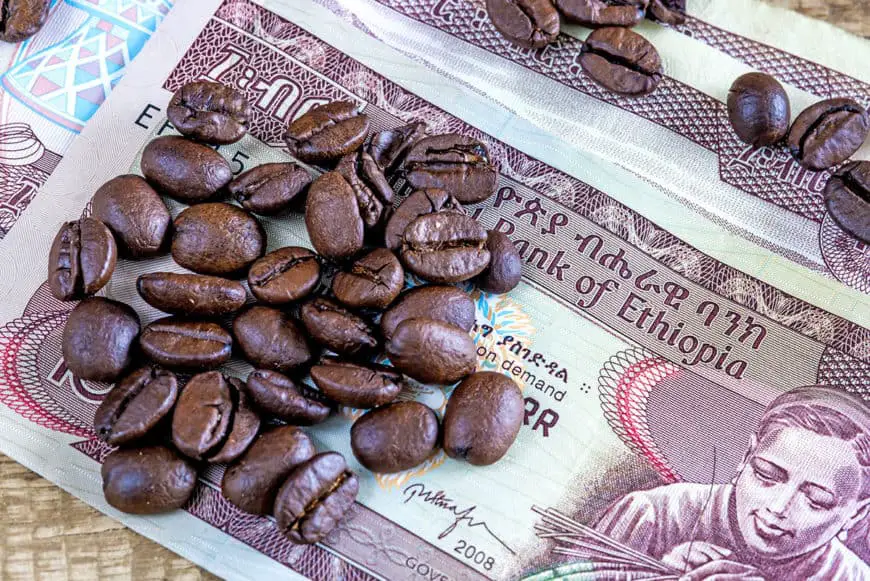
Ethiopia isn’t just another coffee-growing country—it’s where coffee began. Over a thousand years ago, in the highlands of the country, a little red berry sparked a global obsession. Today, Ethiopian coffee is a heavyweight, celebrated for its rich history, culture, and flavors that dance on your tongue like nothing else.
From floral Yirgacheffe to bold Harrar, this East African gem offers a brew for every palate. In this post, we’ll explore what makes Ethiopian coffee special, from its legendary origins to the regions that grow it, how it’s made, and why it’s a must-try for any coffee lover.
I’ve been hooked on Ethiopian coffee since my first sip of its bright, fruity notes—it’s like tasting a story brewed for centuries. Whether you’re new to coffee or a total geek, stick with me to see why Ethiopia remains the king of coffee origins.
The Legendary Origins of Ethiopian Coffee
Coffee likely started in southwestern Ethiopia, maybe in the Kaffa region—hence the name “coffee.” The Oromo people were probably the first to use it, crushing cherries with fat for an energy-packed snack. By the 9th century, folks were brewing it, and a goatherd named Kaldi gets credit in a fun legend. His goats ate red berries, got hyper, and the rest is history.
From those highlands, coffee spread fast. By the 15th century, Somali merchants carried it to Yemen, where Sufi mystics sipped it to stay sharp during chants. Ethiopian Christians dodged coffee until the 19th century, seeing it as a Muslim drink, but it eventually won them over. Since then, Ethiopia’s coffee game has only grown stronger.
Where Ethiopian Coffee Grows: The Big Six Regions
Ethiopian coffee’s diversity comes from its land—volcanic soils, altitudes up to 8,858 feet, and varied microclimates. The southern and western regions lead production, each with its own flair. Here’s the rundown on Ethiopia’s six key coffee-growing zones:
| Region | Altitude (ft) | Main Processing | Flavor Notes |
|---|---|---|---|
| Sidamo | 4,900–7,200 | Washed/Natural | Blueberry, earthy, floral |
| Yirgacheffe | 5,800–7,200 | Washed | Jasmine, citrus, bright |
| Harrar | 4,600–6,955 | Natural | Wine, blueberry, bold |
| Gimbi | 5,570–7,210 | Washed | Fruity, heavy, nuanced |
| Limu | 3,600–6,200 | Washed | Sweet, spicy, balanced |
| Jimma | 3,300–6,500 | Washed/Natural | Mild, clean (washed preferred) |
This table’s your cheat sheet—each region’s got its own culture, shaped by altitude and processing.
Sidamo
South of Lake Awassa in the Rift Valley, Sidamo’s a coffee powerhouse. At 4,900–7,200 feet, it’s got ideal conditions—plenty of rain, warm days, rich soil. One of Ethiopia’s three trademarked regions (with Harrar and Yirgacheffe), its beans are a flavor ride. Washed Sidamo is full-bodied with low acidity, mixing sweet blueberry with earthy, nutty tones. Natural versions lean wine-like, with floral and fruity pops.
Yirgacheffe
A Sidamo subregion, Yirgacheffe’s the darling of coffee snobs. Its wet-processed beans shine at high altitudes, delivering a rich body, bright acidity, and notes of jasmine, lemongrass, and citrus. It’s clean, complex, and often compared to Panama’s fancy Geisha coffee. Want a cup that feels like a blooming bouquet? Yirgacheffe’s your pick.
Harrar
Out east, Harrar grows wild and rugged. At high elevations, small farms produce sun-dried beans, hand-picked and processed old-school. Expect a bold, full body with a fruity punch—think red wine, blueberries, apricot. It’s wild for single-origin sipping but shines in espresso blends. Bonus: leftover shells make a tasty tea called hasher-qahwa.
Gimbi
In the west at 5,570–7,210 feet, Gimbi keeps it wet-processed. Its coffees are heavy-bodied with medium-to-sharp acidity and a fruity finish that sneaks up. Roasters love it for blends, but it holds its own as a gourmet single-origin.
Limu
In the southwest at 3,600–6,200 feet, Limu churns out premium washed beans. They’re sharp yet balanced, with low acidity and a sweet-spicy mix—think fruit with a hint of cinnamon. It’s gourmet coffee that doesn’t shout but steals the show.
Jimma
Also in the southwest, Jimma produces both commercial and specialty beans. Washed coffees are clean and mild, while natural ones can taste off—stick to wet-processed. It’s less flashy but keeps Ethiopia’s coffee engine humming.
Gesha: The Global Star
Gesha, from Ethiopia’s southwestern forests, is a global rockstar. Its jasmine, peach, and tea-like notes made it a hit in Panama’s specialty scene, and it’s now one of the priciest coffees around. Born in Ethiopia, it’s a reminder of the country’s unmatched coffee heritage.
Flavor Profiles: A Taste Like No Other

Ethiopia’s got coffee variety in spades—6,000–10,000 types, mostly unclassified as “Ethiopian heirloom.” These include landraces, shaped by nature, and varieties bred by the Jimma Agricultural Research Centre for disease resistance. Arabica dominates, making up 70% of global supply, and Ethiopia’s genetic diversity delivers wild flavors and leaf rust protection.
Washed coffees, like Yirgacheffe or Limu, are elegant—light, floral, citrusy, with a tea-like finesse. Natural ones, like Harrar or Sidamo, go big—syrupy, fruity, with chocolate and berry notes (blueberry’s the star). Altitude, soil, and processing tweak each cup, so no two sips are the same.
How It’s Made: Processing Ethiopian Coffee
Ethiopia’s coffee magic comes from its processing. Natural, or sun-dried, is the original method. Farmers spread whole cherries on raised beds, drying them in the sun for weeks. The fruit stays on, soaking beans with deep, sweet flavors—think rich berries and a velvety body. It’s labor-intensive but worth it.
Wet-processing, started in Yirgacheffe in ’72, now covers over half the crop. Cherries get pulped within 12–24 hours, fermented, washed, and dried. The result? Cleaner, brighter flavors—herbal, citrusy, delicate. Both methods shine, and Ethiopia’s farmers nail them with generations of skill.
Climate and Cultivation: Nature’s Gift
Ethiopia’s coffee belt—between the Tropics of Cancer and Capricorn—has it all: mild temps, steady rain, lush forests. Most farmers skip chemicals, letting nature work. But climate change is a buzzkill. Hotter days, less rain, and deforestation could slash yields by 70%. Farmers are fighting back with shade trees, irrigation, and moving to higher ground.
Culture and Coffee: The Ceremony
Coffee’s more than a drink in Ethiopia—it’s a ritual. The coffee ceremony, often led by women, is a daily event. Beans are roasted over a fire, ground by hand, and brewed in a clay jebena pot. Incense wafts, popcorn’s served, and folks chat.
Each ceremony has three rounds—abol, tona, baraka—each weaker, symbolizing a spiritual shift. The saying “Buna dabo nawa” (“coffee is our bread”) sums up its role. Half of Ethiopia’s 7.5 million annual coffee bags stay home (3.75 million) for this tradition.
Why Ethiopian Coffee Rules the World
Ethiopia’s coffee hit export mode in the 15th century, and today it’s Africa’s top producer, fifth globally. It produces ~7.5 million 60-kg bags yearly, exporting ~3.5–4 million to the EU (50%), East Asia (25%), and North America. That’s 70% of export cash, supporting 15 million people. Small farmers rule, growing “garden coffee” on tiny plots yielding ~300 kg a year.
The Ethiopian Commodity Exchange (ECX), launched in 2008, streamlined trade but mixed lots, frustrating specialty buyers. Reforms in 2017 fixed this, allowing direct sales for better traceability. In 2006, Ethiopia fought Starbucks to trademark Sidamo, Harrar, and Yirgacheffe, aiming to get farmers better prices—a bold move to own their coffee’s name.
Ethiopia’s also cashing in on coffee tourism. Visitors tour farms, sip fresh brews, and join ceremonies, boosting the economy and sharing the coffee love.
Final Thoughts: Sip the Legend
Ethiopia takes coffee seriously, and it shows. From its ancient roots to its unbeatable variety, this country’s brews are unmatched. Whether you’re into Sidamo’s crisp citrus, Yirgacheffe’s floral elegance, or Harrar’s fruity heft, Ethiopian coffee delivers. Want to brew it right? Go coarse for cold brew, medium for pour-over, and savor the ride.

